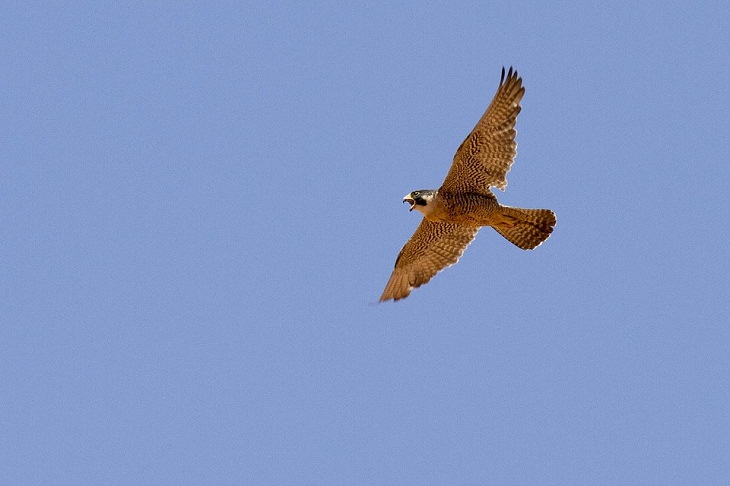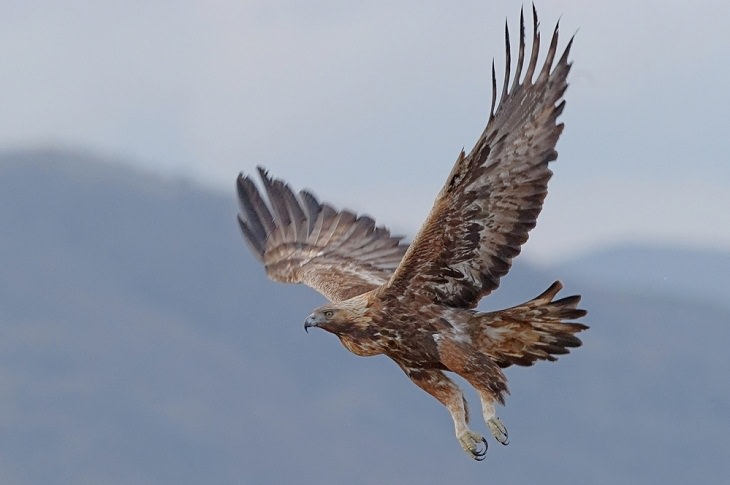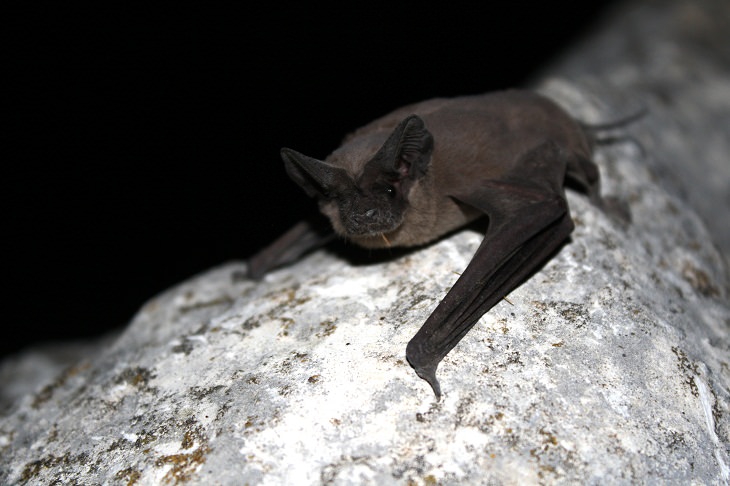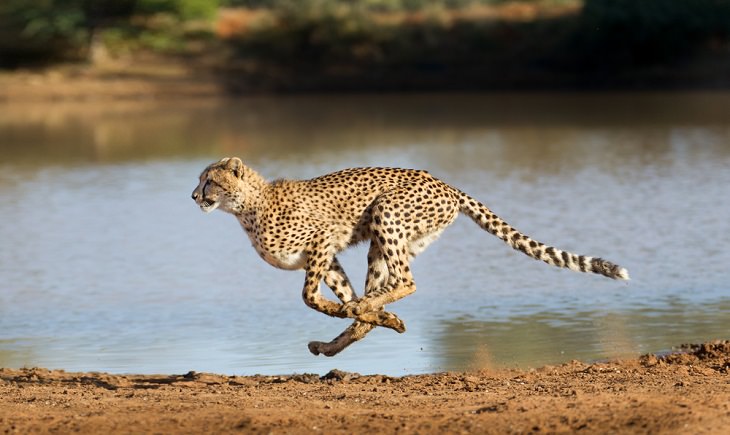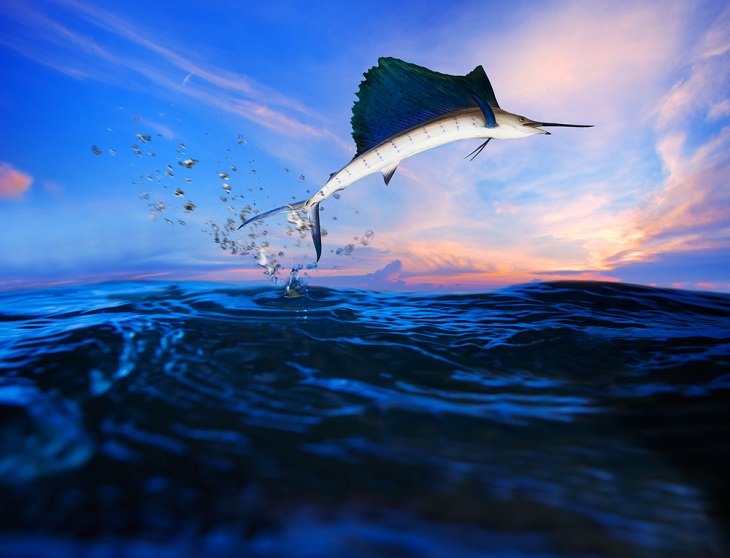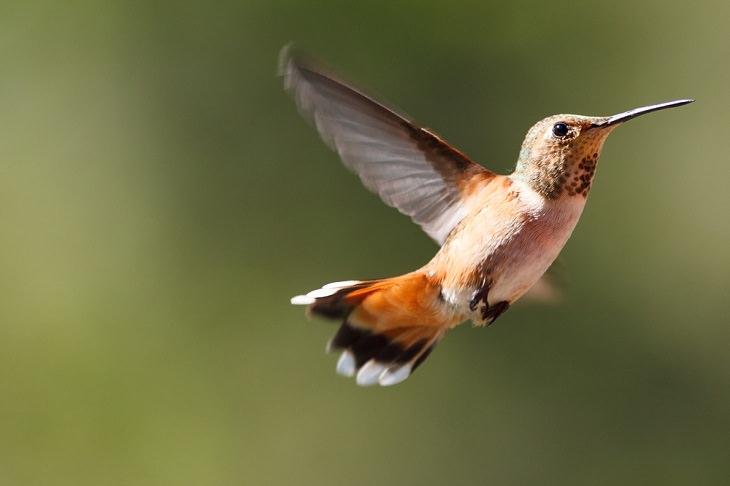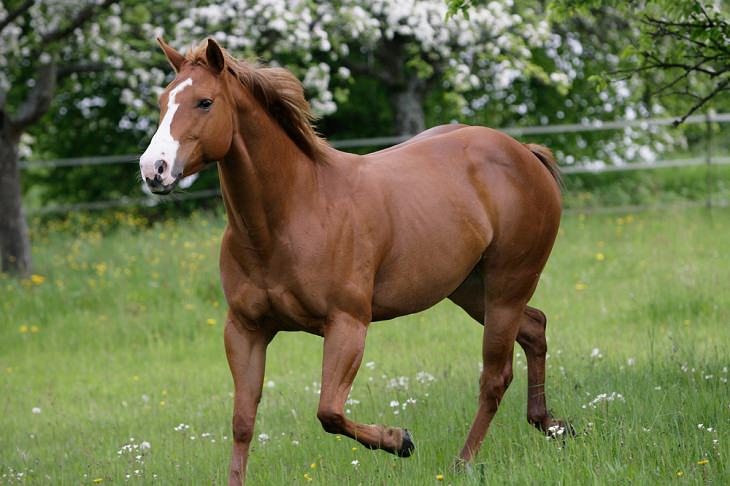The ability to run fast is often a matter of survival in the animal kingdom – both for predators and prey. For the hunters of the wild world, a good burst of speed helps them catch their quarry quickly. Similarly, if the prey wants to survive the claws of death, it has to be swift. This is why watching and learning about the speed of different animals - on land, in the air, and in water - is so fascinating. Some animals run quickly on all four legs for short distances, some move by hopping, some by gliding quickly through the water, and some by diving at break-neck speed through the air.
So, who are the fastest animals in the world? A lot of factors have to be considered here – such as gravity, wind, and animal size - before deciding that. The list below will certainly help in that regard. Here, we present to you some of the fastest animals on Earth whose effortless speed is likely to leave you amazed.
1. Peregrine falcon: 242 mph (389.4 km/h)
The peregrine falcon (Falco peregrines) is the fastest animal on the planet. These birds aren’t just fast; they have been clocked at speeds as high as 242 mph (389.4 km/h). This effectively means that peregrine falcons can dive faster than a moving Formula One race car!
Found on every continent except Antarctica, peregrine falcons are birds of prey and have a cruising flight speed of around 40 and 60 mph (60 and 96 km/h). However, these aerial hunters gain ridiculously high speeds of up to 220 mph (354 km/h) when they are diving. It is a specialized hunting dive called a stoop that allows the bird to swoop down on its prey with immense rapidity. The falcon can achieve such freaky-fast speeds because of its pointed, streamlined wings, a huge breastbone for robust muscle attachments, and stiff feathers that lessen the drag.
No other bird in the world can match the flying speed of a Peregrine falcon in its hunting dive.
2. Golden Eagle: 150 mph (241.4 km/h)
The Golden Eagle (Aquila chrysaetos) is a large and powerful bird that can attain speeds of more than 150 mph (241.4 km/h) when diving. These magnificent birds are North America’s largest birds of prey and stand out because of their long and broad wings. It is because of these long wings that the golden eagle can stay in the air for quite some time and then plunge through the air towards its quarry very swiftly.
3. Brazilian free-tailed bat: 100 mph (160 km/h)
You might be surprised to see a bat on the list, but they deserve it. In a study that was published in 2016, it was revealed that the Brazilian free-tailed bat (Tadarida brasiliensis) has the ability to clock 100 mph (160 km/h) in flight. That makes them the fastest flying animals in the world at horizontal flight.
The researchers caught seven Brazilian free-tailed bats and used an airplane tracking device to study their speeds. They found that all the bats reached speeds of almost 62 mph (100km/h), with one bat clocking at 100 mph (160 km/h). “These are the fastest powered flight speeds documented yet in any vertebrate that is, in bats or birds,” says Gary McCracken of the University of Tennessee in Knoxville, one of the writers of the study. The fastest bird on record for level flight is the common swift (Apus apus), which can reach the top speed of around 69.5 m/ph 112 km/h.
Scientists believe that the aerodynamic body shape of the bats along with their longer than average wings compared to other bat species allows the Brazilian free-tailed bats to be faster.
4. Cheetah: 65-75 mph (104 to 120 km/h)
This one's surely not a surprise. The Cheetah (Acinonyx jubatus) is the fastest animal on land and can gain a top speed of 75 mph (120.7 km/h). If ever there was an animal Olympics held, the cheetah would certainly clinch gold in the category for land sprinters. Their slender but strong legs help them reach top speed in no time. Interestingly, unlike other members of the big cat family, the cheetah is small in size and has an average height of about 3 feet (36 inches).
Native to Africa and Asia, cheetahs are found in open areas where they can easily hunt for prey. However, despite their great agility, cheetahs do tire very easily and hunt in short bursts of speed to maintain their energy levels. Their incredible speed, however, allows them to catch their prey within 40 to 60 seconds.
5. Sailfish: 68 mph (110 km/h)
Anyone who swims will know that moving through water is so much harder than moving through the air because of the extra viscosity. For the sailfish (Istiophorus), though, sailing through water comes easy. It is widely regarded as the fastest known fish in the water and has been clocked at speeds in excess of 68 mph (110 km/h) while leaping, according to the National Oceanic and Atmospheric Administration (NOAA). They are definitely fast leapers and are easily one of the fastest fish at swimming short distances.
Sailfish can be found in temperate and tropical waters in the Atlantic and Pacific oceans and are known for their large first dorsal fin and their spear-like upper jaw. Their 10 feet long slim bodies allow them to swim fast and dive quickly.
6. Anna’s hummingbird: 60 mph (96.5 km/h)
They may be tiny, but these hummingbirds can even outfly some falcons. Anna's hummingbird (Calypte anna) is native to the western coastal regions of North America. This little bird is only 7 cm (2.7 inches) in length but can reach a top speed of 60 mph (96.5 km/h). Furthermore, when this hummingbird is at the fastest point of its dive, it covers an amazing 385 times its own body length every second. This is the fastest aerial maneuver performed by any bird of this size.
The peak of acceleration of Anna's hummingbirds, however, is very short and lasts for mere fractions of a second. Despite that, the terrific speed that the diminutive bird can achieve is indeed impressive.
7. Pronghorn Antelope: 55-60 mph (89-96.5 km/h)
The pronghorn antelope (Antilocapra Americana) is one of the often-overlooked mammals of the world. However, these small ungulates are special because they can reach top speeds of around 55 mph (89 km/h) and can even sustain a pace of 30 mph (48 km/h) for over 20 miles. This means that this little antelope can give the cheetah a good run for its money and is easily the fastest land animal in North America.
The pronghorn antelope is even better than the cheetah because it can sustain blazing speeds for long durations. This ability is really helpful during the long migrations the animals have to undertake which can span 300 miles (483 km) between the Upper Green River Basin of Wyoming and Grand Teton National Park.
Fascinatingly, the high speeds of these animals start at a very young age and even young pronghorns can outrun a human in only a matter of days after being born.
8. Quarter Horse: 55 mph (89 km/h)
Quarter Horses (Equus caballus) are one of the oldest recognized breeds of horses in the world. This breed originated in the United States in the 1600s from a blend of imported Spanish stallions and English mares and was bred for performance. One of the most distinguishable traits of these horses, though, is their speed - they have been able to manage over 55 mph (89 km/h). While a Thoroughbred horse can maintain greater speed over long distances, the quarter horse’s sprint speed is much better over short distances like a quarter-mile.
Compact and muscular, quarter horses are the most dominant animal in the horse racing world and are also the most popular breed in the United States today.

